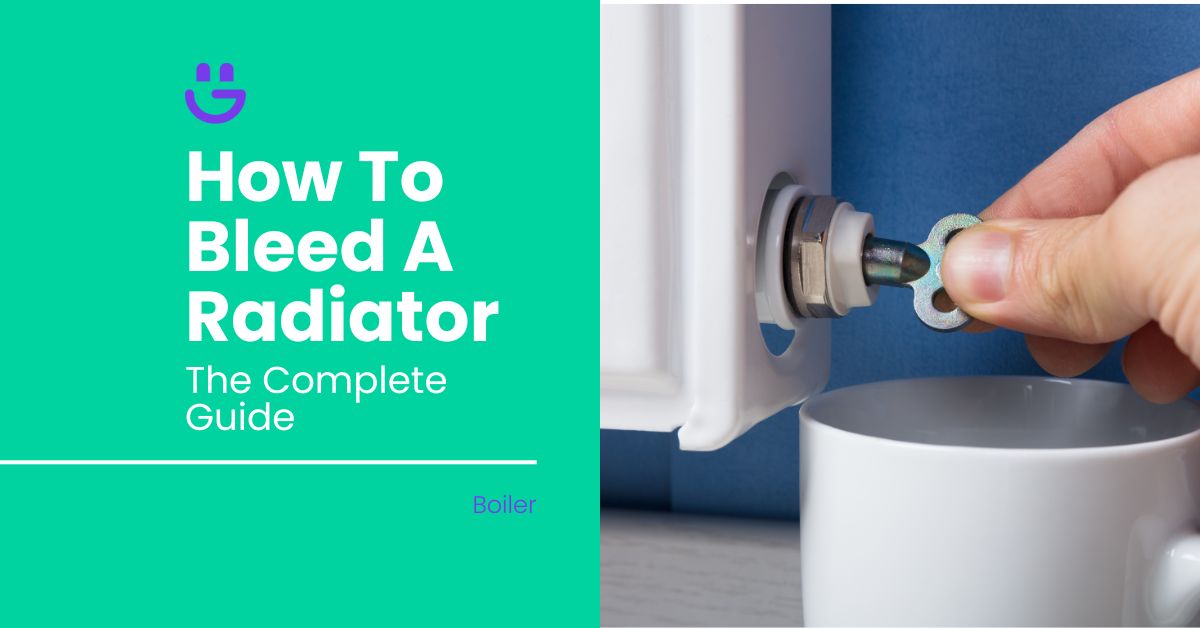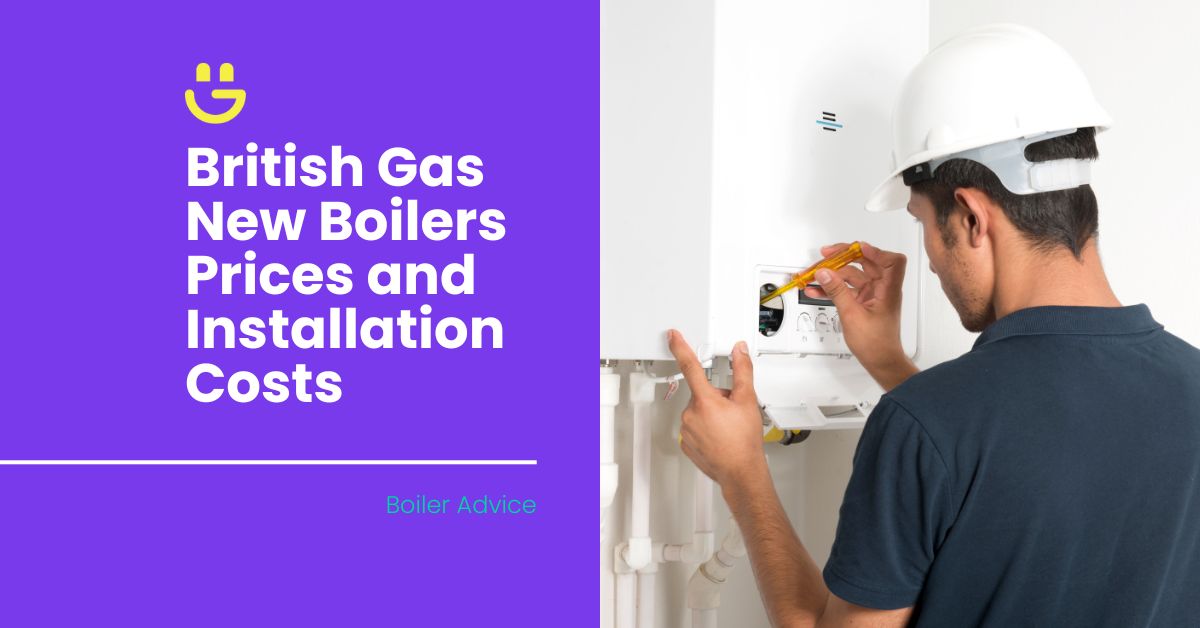James Elston
Published April 9, 2024
Last Updated on January 13, 2025
Bleeding radiators may not be the most appealing task, but it can make a major difference in how cosy your house feels. Radiators accumulate trapped air over time, which causes cold spots and prevents your radiator from producing warmth effectively.
However, you can get that hot water flowing again and savour the cosy embrace of effective heating by taking a few minutes to clear out any trapped air within your radiator! It’s also an excellent way to boost your home’s energy efficiency and save money on energy bills.
In this guide, we will walk you through how to bleed a radiator in seven steps, so you can enjoy a warm and comfortable home during the winter months. Let’s get started!
Contents
- 1 Step-by-Step Guide to Bleeding Radiators
- 1.1 Tools needed
- 1.2 Step 1: Prepare the area
- 1.3 Step 2: Allow radiators to cool
- 1.4 Step 3: Locate and open the thermostatic radiator valve
- 1.5 Step 4: Find and open the bleed vent
- 1.6 Step 5: Close the vent and repeat
- 1.7 Step 6: Check boiler pressure
- 1.8 Step 7: Check that your radiators heat up evenly
- 2 Can you bleed a radiator when the heating is on?
- 3 Why Bleeding Radiators Matters
- 4 FAQs
- 5 Final Thoughts
Step-by-Step Guide to Bleeding Radiators
Radiator bleeding is not rocket science, but it requires some finesse. Here’s how to bleed a radiator in seven steps:
Tools needed
Before we get started, let’s talk about some handy tools to have in your arsenal for bleeding your radiators. These include the following:
- Radiator bleed key: This tool usually fits into the radiator bleed valve and has a square or hexagonal end.
- Rags or towels: It’s a good idea to have some rags or towels on hand in case water leaks during the bleeding process.
- Bucket or container: Having a bucket or container close by will help you catch any extra water while bleeding the radiators.
- Pliers or adjustable wrenches: These tools can help loosen stubborn radiator valves that may be difficult to turn with a radiator bleed key.
- Safety goggles: Safety goggles are essential to protect your eyes from splashes or drips of hot water.
- Water pressure gauge: This tool can help you measure the pressure in your boiler system, allowing you to determine if bleeding is necessary.
If you have these tools on hand, it will be much simpler to bleed your radiators effectively. Remember that to prevent damage or safety issues, it’s always advisable to see a certified heating expert if you need clarification about how to bleed your radiators or regulate your boiler pressure.
Step 1: Prepare the area
Once you have all your tools, clear the area around your radiators so you have enough room to bleed them.
It’s also a good idea to place some old towels or newspapers down around your radiators to collect any spills.
Step 2: Allow radiators to cool
To prevent accidents, you’ll need to know how to turn off your radiators and heating system.
- To turn off your radiators, turn the manual valve in a clockwise motion until it stops.
- To turn off your central heating, you’ll simply need to turn off the power switch.
- Once you have done this, let all the radiators cool down. While it may be tempting to spring into action immediately, this isn’t something you want to do when there’s a risk of hot water scalding or burning you.
Step 3: Locate and open the thermostatic radiator valve
It’s time to find and open the thermostatic radiator bleed valve after the radiators have cooled.
- The thermostatic valve, which regulates the hot water flow into the radiator, is often located on the side or bottom of the radiator.
- Turn the bleed valve anti-clockwise using a wrench or a radiator key. Be careful not to overpress the force, which might harm the valve.
- Once the valve is opened, the radiator’s air will begin to release, making a hissing noise. This indicates that the bleeding process has started, so it’s a good sign.
Step 4: Find and open the bleed vent
Next, locate and open the bleed vent.
- The bleed vent is located opposite the valve on the radiator. Usually, this vent is a tiny metal or plastic bleed screw that you can open with a radiator key or a flathead screwdriver.
- Have a cloth or towel handy to collect any water that may leak out.
- To access the bleed vent, turn the bleed screw counterclockwise. Avoid unscrewing it all the way.
- You may hear a gurgling or hissing sound when you open the vent because of the trapped air escaping.
- Once the air stops hissing and only water escapes, shut off the vent by rotating it clockwise.
Step 5: Close the vent and repeat
Now, shut off the vent and carry out the same procedure for the remaining radiators in your central heating system. To stop leaks:
- Be careful to close each vent completely.
- When closing the vent, remember not to overtighten it since this might harm the vent or the radiator.
- Twist it until it fits securely. If you overtighten, it may also be challenging to open the vent when you need to in the future.
Additionally, you’ll need to know how to balance your radiators to ensure that the central heating system heats up evenly and that all the air has been released. Doing this maximises the heating system’s effectiveness and guarantees that heat is delivered uniformly throughout the house.
When handling hot water and heating systems, use caution at all times. Seek expert advice if you are unsure or uncomfortable with any of the steps.
Step 6: Check boiler pressure
Find the pressure gauge on the boiler’s front to check the pressure. Typically, it’s a circular dial with digits 0 through to 4 or 5. For most boilers, the optimal pressure range is 1 to 1.5 bars. If the boiler pressure is low (below 1 bar), you should use the filling loop to add water to the heating system.
However, if the boiler pressure is too high (above 1.5 bars), you should lower it by pumping water out of the radiators. Proper boiler pressure must be maintained for the central heating system to operate safely.
Step 7: Check that your radiators heat up evenly
Now that your radiators have been bled, you need to ensure that they are heating up correctly when you turn them on. Since there is no more air trapped in the system, your radiators should warm up evenly, without any cold spots.
If they don’t, it could be due to:
- A blockage in the system preventing hot water from circulating properly.
- A faulty radiator valve.
- A problem with the central heating pump.
Consult a professional plumber or heating engineer to diagnose and fix the issue.
Can you bleed a radiator when the heating is on?
No, never bleed a radiator while it’s hot. Always ensure that your heating system is turned off and that the radiators have fully cooled down before starting. This is essential because radiators contain both water and trapped air, which will escape when you open the bleed valve.
When the heating is running, the water and trapped air inside reach high temperatures, posing a risk of burns if released.
Why Bleeding Radiators Matters
Radiator bleeding is critical, since trapped air can reduce your heating system’s performance. The pockets of cold areas stop the hot water from flowing through the radiator efficiently and uniformly. As a result, your radiator may have trouble heating up or may not become as hot as it should.
This makes your house uncomfortable, and your central heating system needs to work harder and use more energy to heat, raising your electricity costs.
You can get rid of these air pockets and restore the proper flow of hot water by bleeding your radiator, which will guarantee heating efficiency and economy. It’s an easy and affordable fix that may save you money on energy costs.
Signs your radiator needs bleeding
Here are a couple of signs that indicate your radiators require bleeding:
- If the top of your radiator feels chilly while the bottom stays hot, it may need bleeding. This unequal heat distribution signals that air pockets are trapped inside and obstructing the hot water’s natural flow.
- Strange noises coming from your radiator, such as gurgling or hissing sounds. These sounds are produced when air bubbles become stuck in the system and interfere with the hot water’s flow.
- If your radiator takes longer than usual to heat up, this may indicate that air pockets are obstructing the heat’s ability to move efficiently.
Identifying these symptoms and bleeding your radiator ensures your heating system functions at its peak to provide the most warmth and energy efficiency.
When and how often to bleed radiators
Bleed your radiators once a year, ideally before winter arrives.
However, there are scenarios in which you may need to bleed your radiators more regularly. For example, if you hear gurgling noises from specific radiators or observe some not heating up as they should, this might be a sign that there is an accumulation of air. In these situations, bleeding particular radiators more frequently can ensure that they operate at their best.
Additionally, mineral deposits might build up in modern radiators if you reside in a hard water location, which can cause blockages and lower the radiators’ effectiveness. In some cases, bleeding every few months can ensure effective heating and help avert problems.
FAQs
Do you drain all the water when bleeding a radiator?
No, you do not drain all the water out of your radiators when you bleed them. Radiator bleeding involves releasing the trapped air while central heating flushing involves removing the water.
Why is there no water when I bleed my radiator?
One possible reason is that there is a leak in the system, causing a loss of water. Another reason could be that the radiator valve is closed or partially closed, preventing water from flowing into the radiator.
It’s essential to check for leaks and ensure the valve is fully open before attempting to bleed the radiator again. If the issue persists, seek assistance from a professional plumber or heating engineer.
Final Thoughts
One of the most important steps to ensure your house is heated correctly is to bleed your radiators. You can maximise the efficiency of your radiators and avoid the formation of cold patches by clearing out any trapped air. Bleed your radiators frequently to keep your home warm and comfortable all winter.
Make it a part of your usual maintenance rather than waiting until you have chilly areas in your house or notice a decline in heating effectiveness. By following Eco Happy‘s methods, you can bleed your radiators effortlessly and enjoy the benefits of a well-operating heating system.
Do you need help bleeding your radiators? Get in touch with Eco Happy to schedule an appointment with one of our trained technicians.






James Elston
Boiler Expert
James Elston is the top boiler replacement and heating expert at Eco Happy. He has over 20 years of experience in the industry, focusing on Gas Safe boiler installations and offering home-heating and energy-saving solutions to homeowners across the UK. From sourcing the most energy-efficient combi boiler to providing specialist heating advice, James ensures that Eco Happy maintains the highest standards and best customer service.